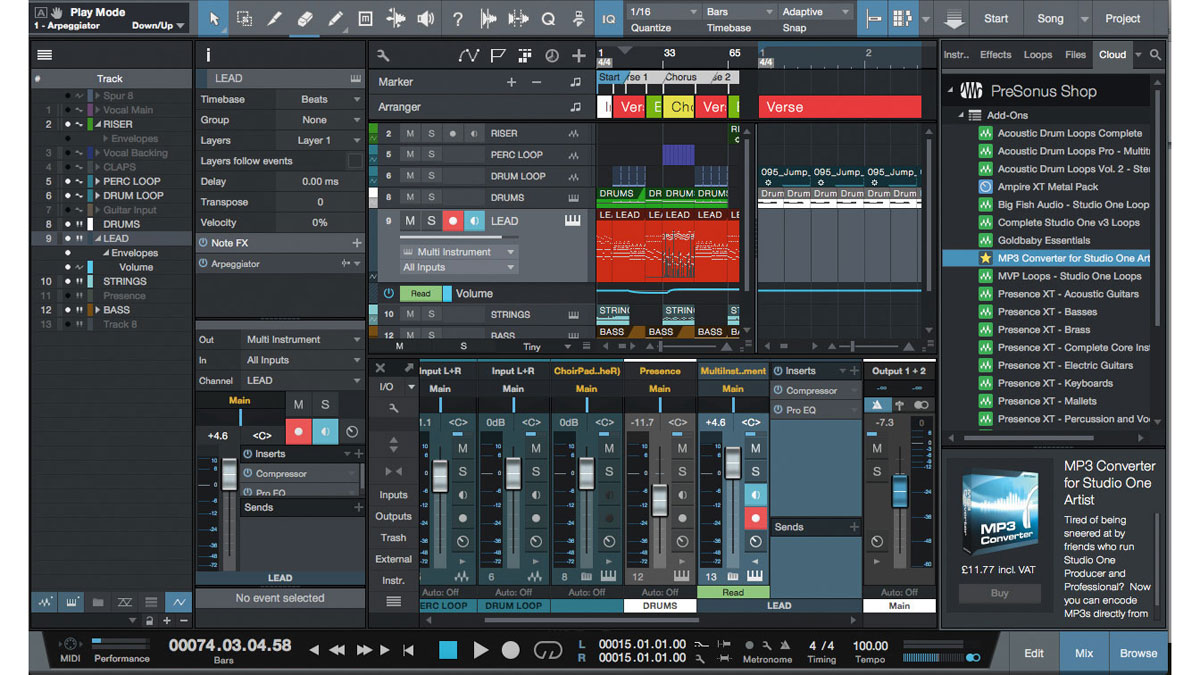

Input Gain: This knob can reduce or increase the incoming signal’s gain.Stereo Link: When this button is engaged, the compressor will sum a stereo input signal for signal-power detection.Look Ahead: This button can engage/disengage the 2 ms Look Ahead function.Knee: This knob adjusts the soft-knee width.Threshold: This knob lets the user set a level at which incoming signals surpassing it, will be compressed.It can vary from 1:1 (no compression) to 20:1 (limiting). Ratio: This knob adjusts the compression range.It is easy to see from the previous picture, the Compressor plugin has several parameters that can be explained as: The Compressor plugin window will open as:

From the inserts list of the track, select “Compressor”:
#Presonus studio one 4 how to#
One of the most used processors that come with Studio One is the Compressor, which can be defined as a device that affects the dynamic range of a signal by bringing down the level of the loudest parts, making the loud and quiet parts closer together in volume, ultimately yielding volume differences that are less obvious.įor the purpose of this tutorial, we will explain how to use the Presonus Compressor plugin in Studio One 4: Studio One 4 comes with a variety of proprietary plugins that can help the user mix a music production completely “in-the-box”. Plugins can emulate the behavior of vintage analog pieces of gear, or simply act as clean/linear digital signal processors, performing tasks such as equalization, compression, limiting, expansion, gating, time-domain effects, etc.

On the modern days of audio mixing, the digital tools that engineers use in order to shape the recorded sound are called Plugins. Need a Pro Audio laptop to run Presonus Studio One 4 software and all of its features at its best? Check out the MC Mobile line of Pro Audio Laptops from PCAudioLabs. The following tutorial shows the user how to use the Presonus Compressor plugin in Studio One 4.


 0 kommentar(er)
0 kommentar(er)
